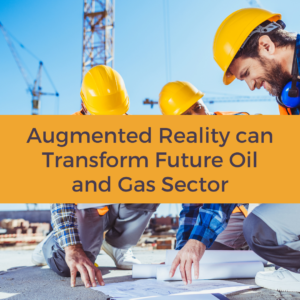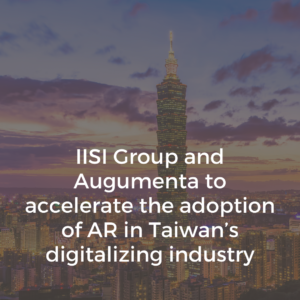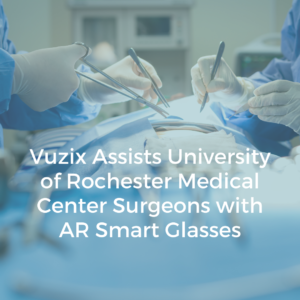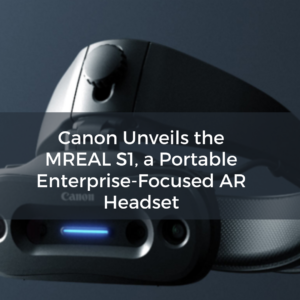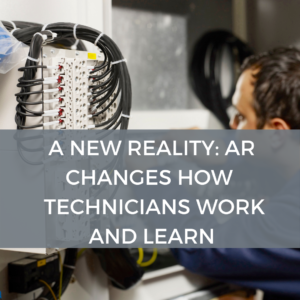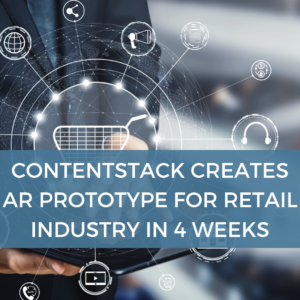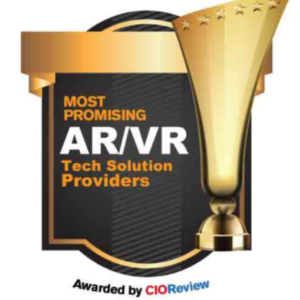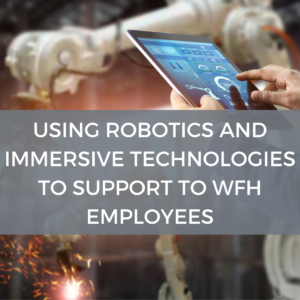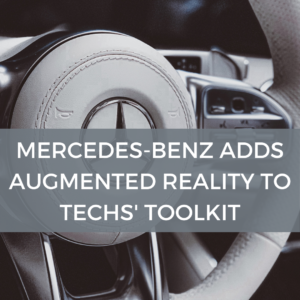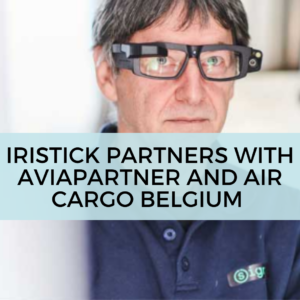Taiwan is well-known for its high-tech industry with electronic manufacturing companies forming a large part of it. Digital transformation is having the same effects on the Taiwanese industry as it’s having all over the world, changing the ways enterprises operate. To capture the full benefit of digitalization and to compete in the future markets, Taiwanese companies are advancing their digital strategies at a growing speed. Data and how well companies are able to use it are vital success factors in this. We are proud to work together with IISI to make sure AR as a key technology to make data visual and usable, is part of these strategies.
Starting with a large-scale SmartPanel deployment
The Augumenta and IISI cooperation gets a speedy start with a project that brings the Augumenta SmartPanel technology into one of IISI ‘s client’s production facilities in Hsinchu Science Park, the top semiconductor manufacturing hub globally. Virtual control panels and the Augumenta marker technology will be integrated into the client’s systems to monitor and control the production lines with the help of smartglasses and 5G connectivity. Easy access to data saves time and lets people on the factory shop floor react faster helping to optimize the uptime of the production lines.
In this project, we have reached a new milestone in deploying the technology; a well over a hundred panels are placed into the facilities which make it the largest number of panels used in a single project so far. The key value-adds of virtual UIs could not be clearer: the flexibility and cost-efficiency of adding this many control points to a production line virtually are on a completely different level compared to building the same amount of traditional hardware-based ones.
Combining experience and innovativeness
IISI group has an impressive track record on large-scale projects for IT system planning, deployment, maintenance, and operation. The company has provided large systems for customers, such as the public sector, banks, smart city, health care, manufacturing, and has a strong position in working with the semiconductor industry. Augumenta, having a development hub also in Taiwan, is the forerunner in industrial augmented reality development and focusing on helping companies improve productivity with Industry 4.0 technologies. Together, the two companies are extremely well-positioned to advance enterprise AR in the area.
As a result of the cooperation agreement, Augumenta licenses core AR technologies to IISI. The solutions include all of our key apps, such as the virtual control panel solutions, SmartAlert and Guide as well as our latest marker technology. IISI tailors the solutions to fit the needs of their clients and takes care of integrating them into customer IT systems. IISI will also provide the needed technical support for the end-users. The companies work in close cooperation in developing the core assets. IISI will have full visibility and access to Augumenta’s latest innovations and in turn, promotes the solutions to their clients.
“In the age of boundless connectivity and intelligent automation of the 5G era, we believe that the application of AR technology will bring a considerable amount of business opportunities, especially in the semiconductor industry.“ says Andy Lee, Director of Technology Services Business Division of IISI Group.
Tero Aaltonen, Augumenta CEO, summarizes: “Working together with IISI has been incredibly straightforward because both companies have a similar vision of the future of manufacturing and the role of AR in it. With IISI’s strong presence in Taiwanese markets, they are a perfect partner for us, and their experienced engineering teams adopted our AR technology in record time. We are looking forward to bringing the benefits of AR to Taiwan’s already-strong high-tech industry together.”
Read about Augumenta on their AREA member profile.
